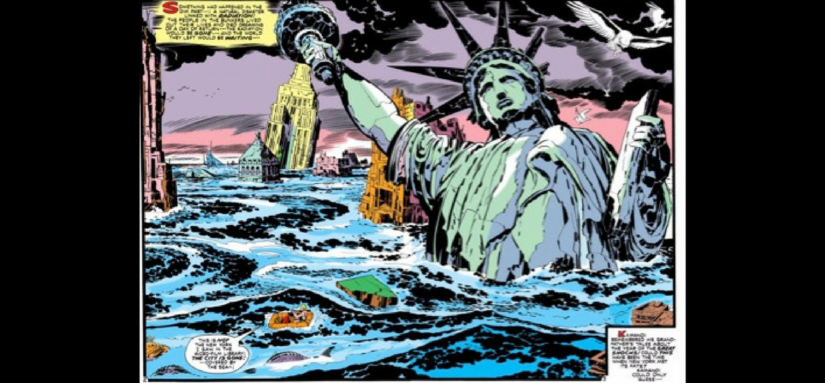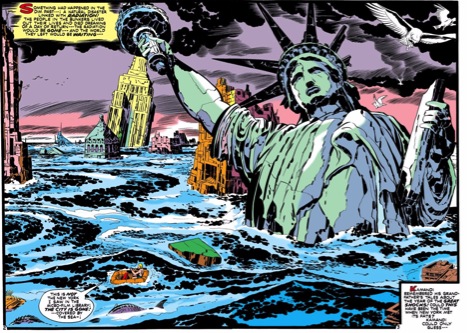Last time, we began our journey into the highlights of Jack Kirby’s voluminous catalogue with the peculiar, well-paced, and innovative Mister Miracle that took the idea of a legacy hero and went running with it. This time, we’re catching up with Kirby in #1972 for another tonal outlier in his mainstream superhero work. In fact, while Kamandi would later show up in other DC Universe books, you can’t get much more removed from the style of DC stories and characters than this. Let’s see what makes it tick.
Kamandi: The Last Boy on Earth #1 is written/penciled/edited by Jack Kirby and lettered/inked by Mike Royer. Unfortunately, there’s still no color credit. Alas, we barely knew ye, oh colorist. (Like, at all.) This first issue of Kamandi: The Last Boy on Earth begins up with… well, Kamandi, the last boy on Earth. He’s living with his grandfather in a post-apocalyptic world that has been taken over by anthropomorphic animals. It’s all very Planet of the Apes, but Kamandi isn’t just up against primates here. No, these guys range from wolves to tigers to dogs – and they’re all toting guns bigger than Oberon himself. Kamandi’s grandfather gets Uncle Ben’d early in the story, and Kamandi responds… well, not at all the way I pictured. He follows through on the “jungle adventure meets sci-fi” genre and begins blasting his own gun right back at his enemies. It threw me for a loop and epitomized the strange mixture of these two seemingly ill-fitting genres, but it just kind of works. Kamandi is divorced from human culture, so he doesn’t seem to have the same hang-ups about dealing with his villains that many DC heroes have. This could either speak to the kill-or-be-killed nature of his situation, or perhaps simply means that Kamandi isn’t just the last boy on Earth… perhaps he’s still the last soldier fighting for Earth.
The story itself is action-packed and paced far, far faster than Mister Miracle. Instead of learning about the people involved, we learn mostly about the world through speedy action scenes. Kirby handles the action with precise, clean, strong lines and a unique clarity of movement even when multiple things are happening in a small panel on a six-panel grid page. The moments that left me stunned, though, had no action at all. When Kirby works with bigger panels, his work truly shines. A few close-ups on Kamandi were clear standouts, but the real stand-out moment in the issue is the devastating and beautiful double-page spread that showcases New York City destroyed and underwater. It shows up just two pages into the book and is one of the most effective double page spreads, bar none, I’ve seen in a comic. A wrecked NYC has become a bit of a cliché as films and comics continue to explore the idea, but there is something about this reveal that separates itself from the other versions of this I’ve seen in more modern film and print media. It could be the detail, the way the Statue of Liberty dwarfs Kamandi even as it bobs in the water, tilted and broken. It could be the dark shadows that look like blotches off ink spreading out through the churning blue ocean. It could be the pink sky, which looks to be on the verge or breaking out into a storm.
Or, it could be all of it.
Jack Kirby’s artwork is great for many reasons, but what stood out to me in Kamandi is the balance struck between having a ton going on all at once while still keeping the artwork simple, concise, and focused. The amount of visual data we’re given in a double-page spread – a single static image – from Kirby is near the same amount that we’re given in a busy fight scene later in the issue. With this mastery of style at use, even familiar ideas like the anthropomorphic villains and the devastated New York City seem new again… and more interesting than ever.
NEXT TIME: Our journey takes us to Asgard, where we meet the mighty Thor.





Comments are closed.